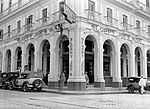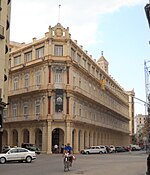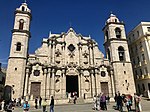Paseo del Prado, Havana
Buildings and structures in HavanaGardens in CubaHistory of HavanaStreets in HavanaTourist attractions in Havana

Paseo del Prado is a street and promenade in Havana, Cuba, near the location of the old city wall, and the division between Centro Habana and Old Havana. Technically, the Paseo del Prado includes the entire length of Paseo Martí approximately from the Malecon to Calle Máximo Gómez, the Fuente de la India fountain. The promenade has had several names; it was renamed Paseo de Martí in 1898 with the island's independence from Spain. Despite the historic references, the people of Havana simply call it "El Prado".
Excerpt from the Wikipedia article Paseo del Prado, Havana (License: CC BY-SA 3.0, Authors, Images).Paseo del Prado, Havana
Paseo de Martí (Paseo del Prado), Havana
Geographical coordinates (GPS) Address Phone number Website Nearby Places Show on map
Geographical coordinates (GPS)
| Latitude | Longitude |
|---|---|
| N 23.139166666667 ° | E -82.359166666667 ° |
Address
Centro Asturiano
Paseo de Martí (Paseo del Prado) 309
10202 Havana (Prado)
Havana, Cuba
Open on Google Maps










